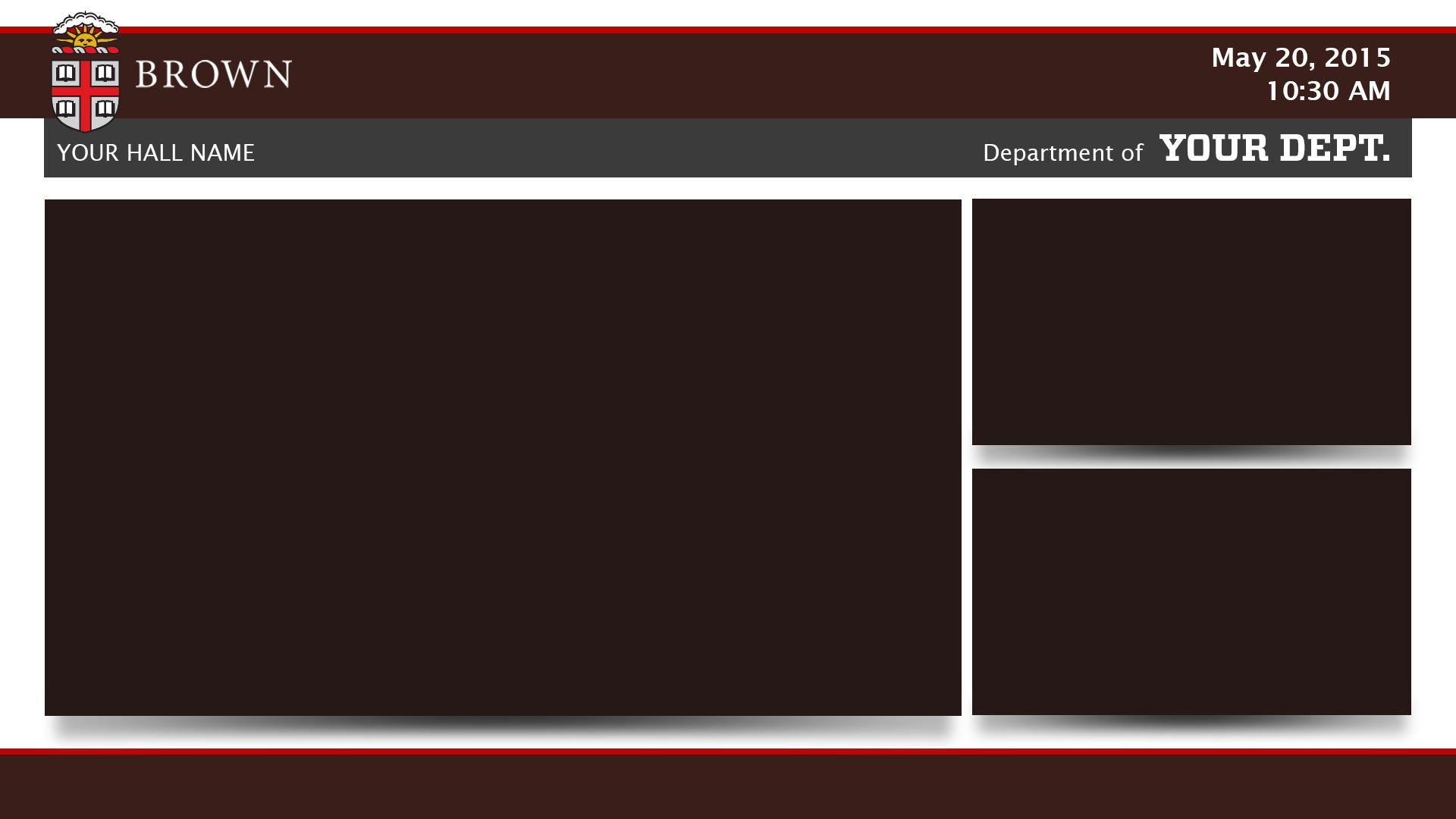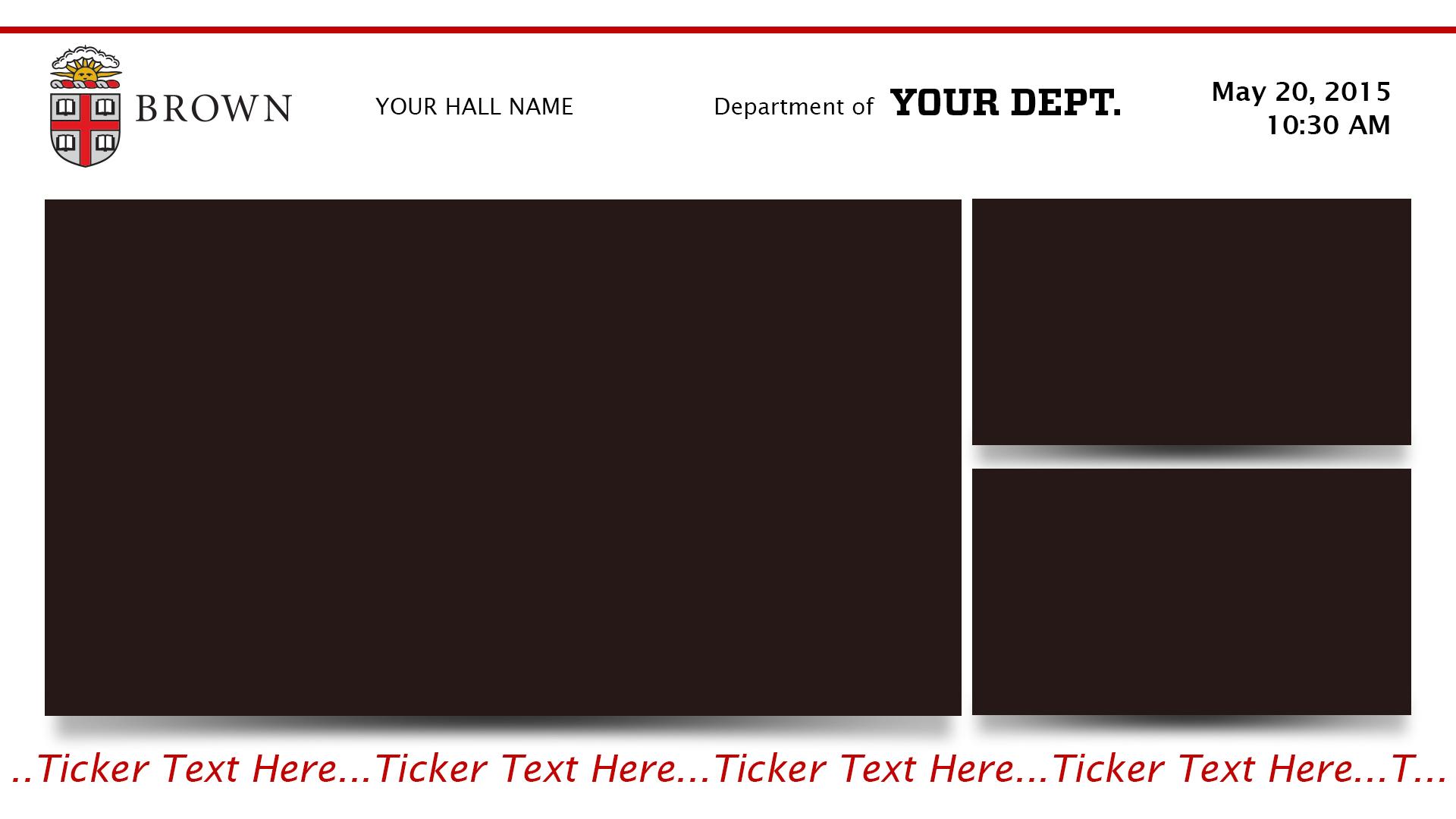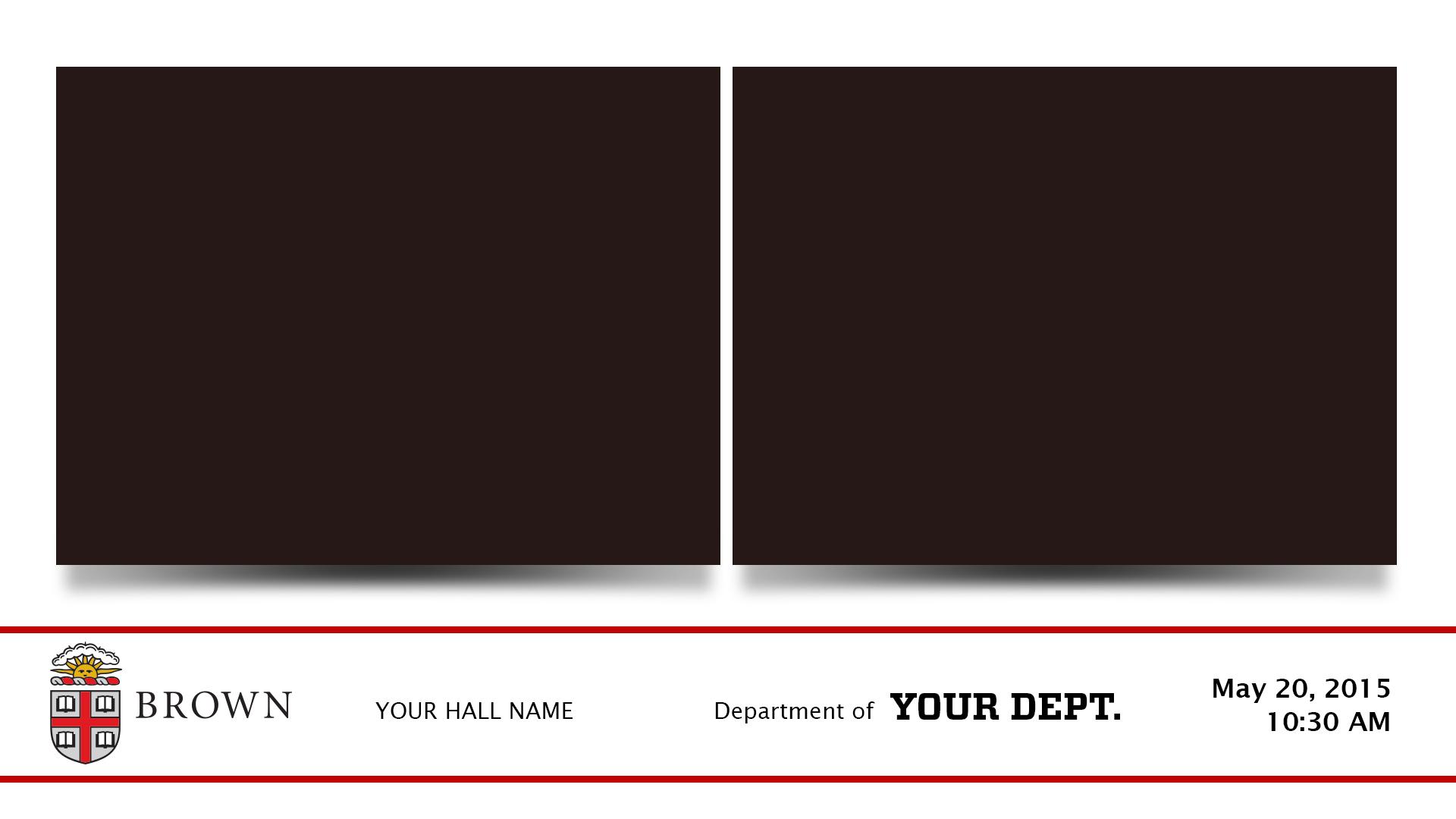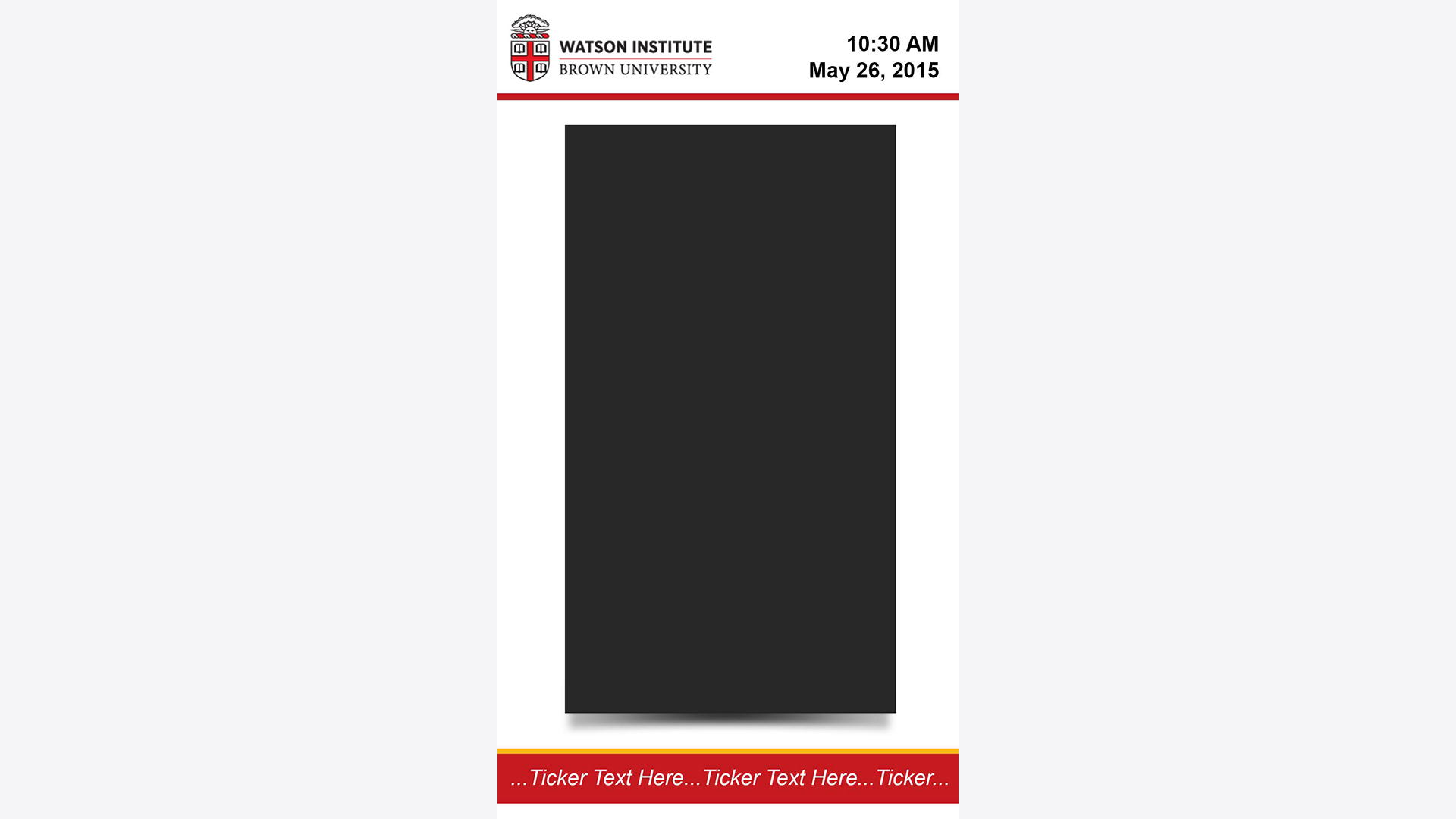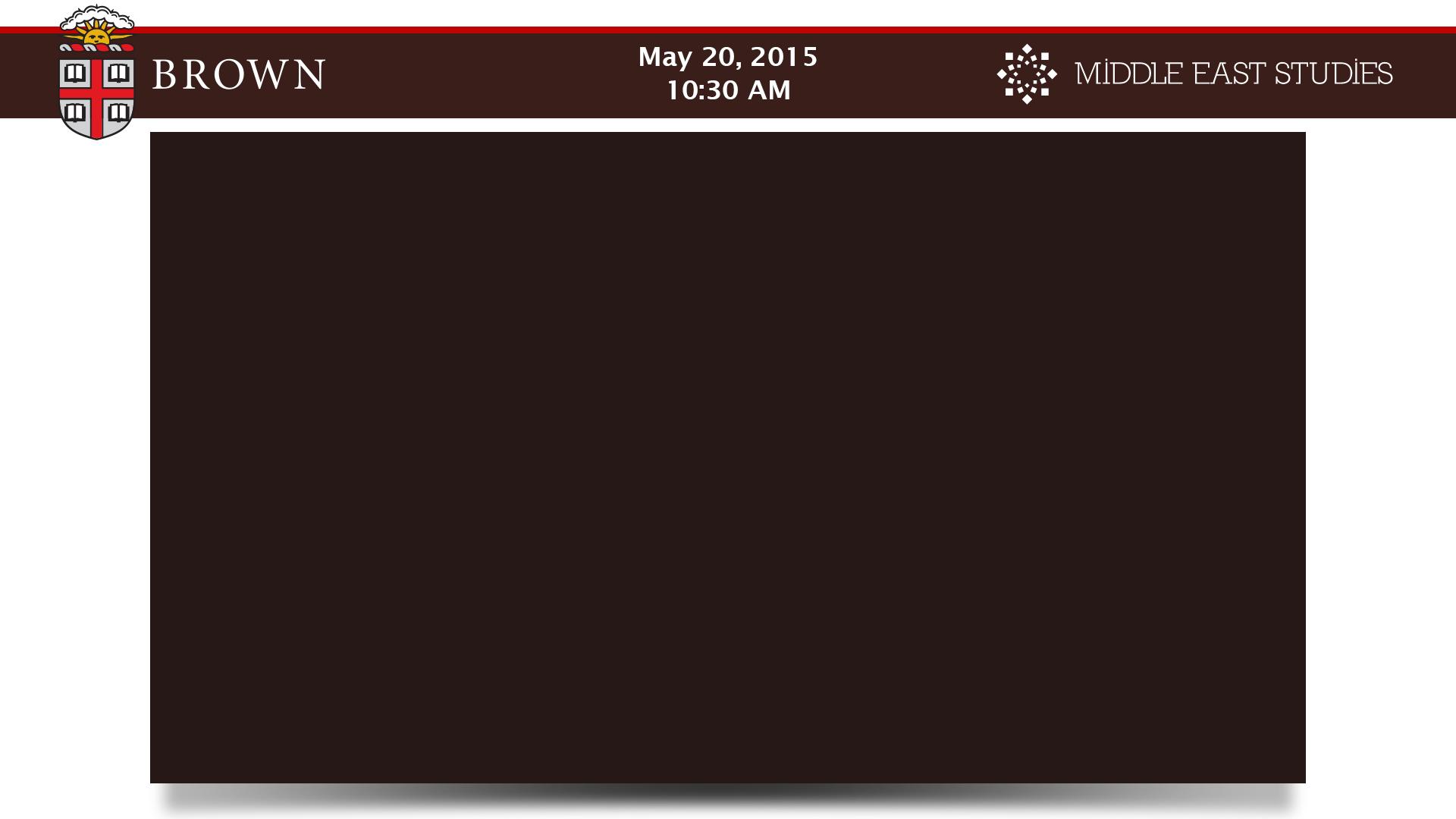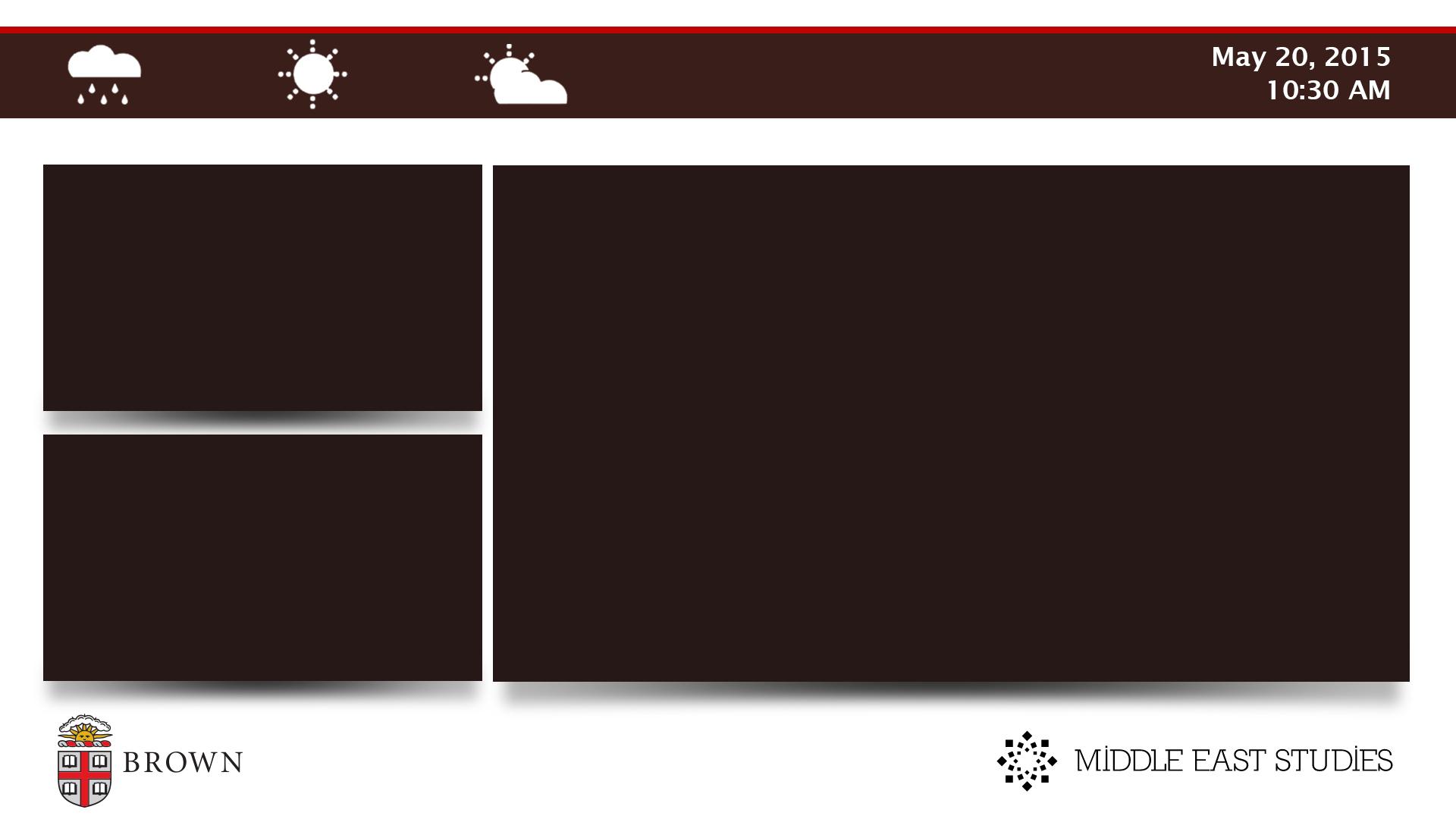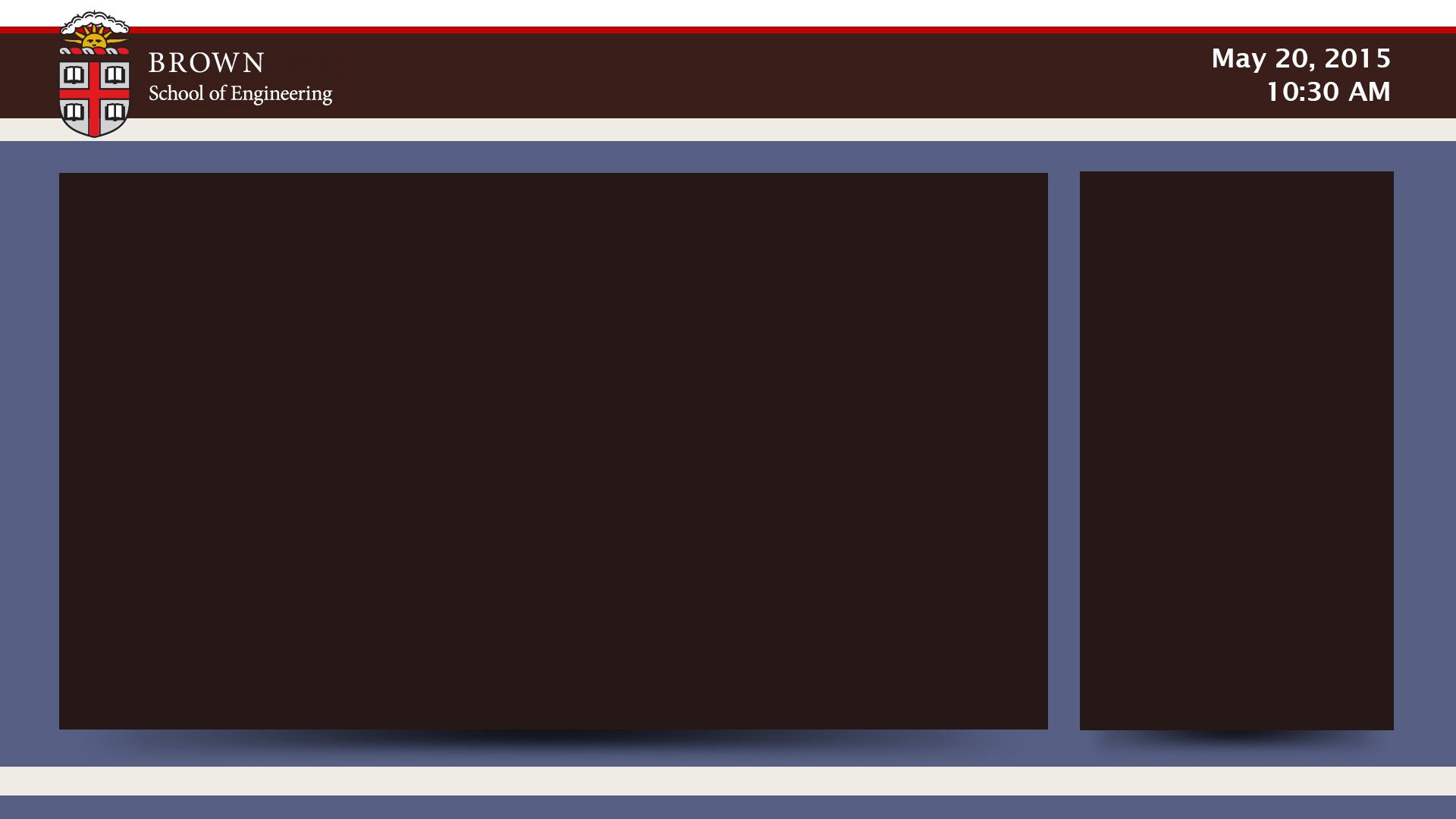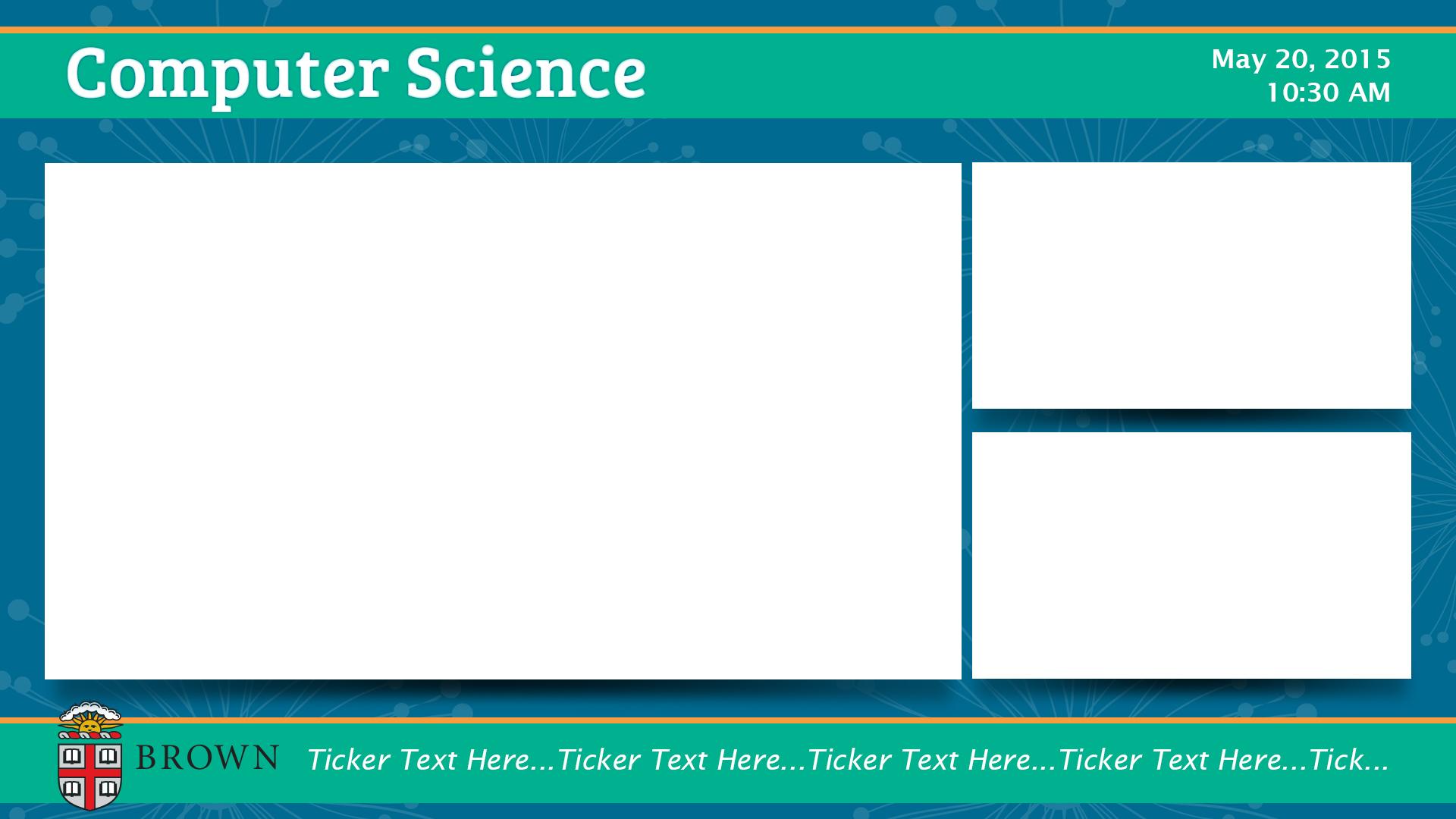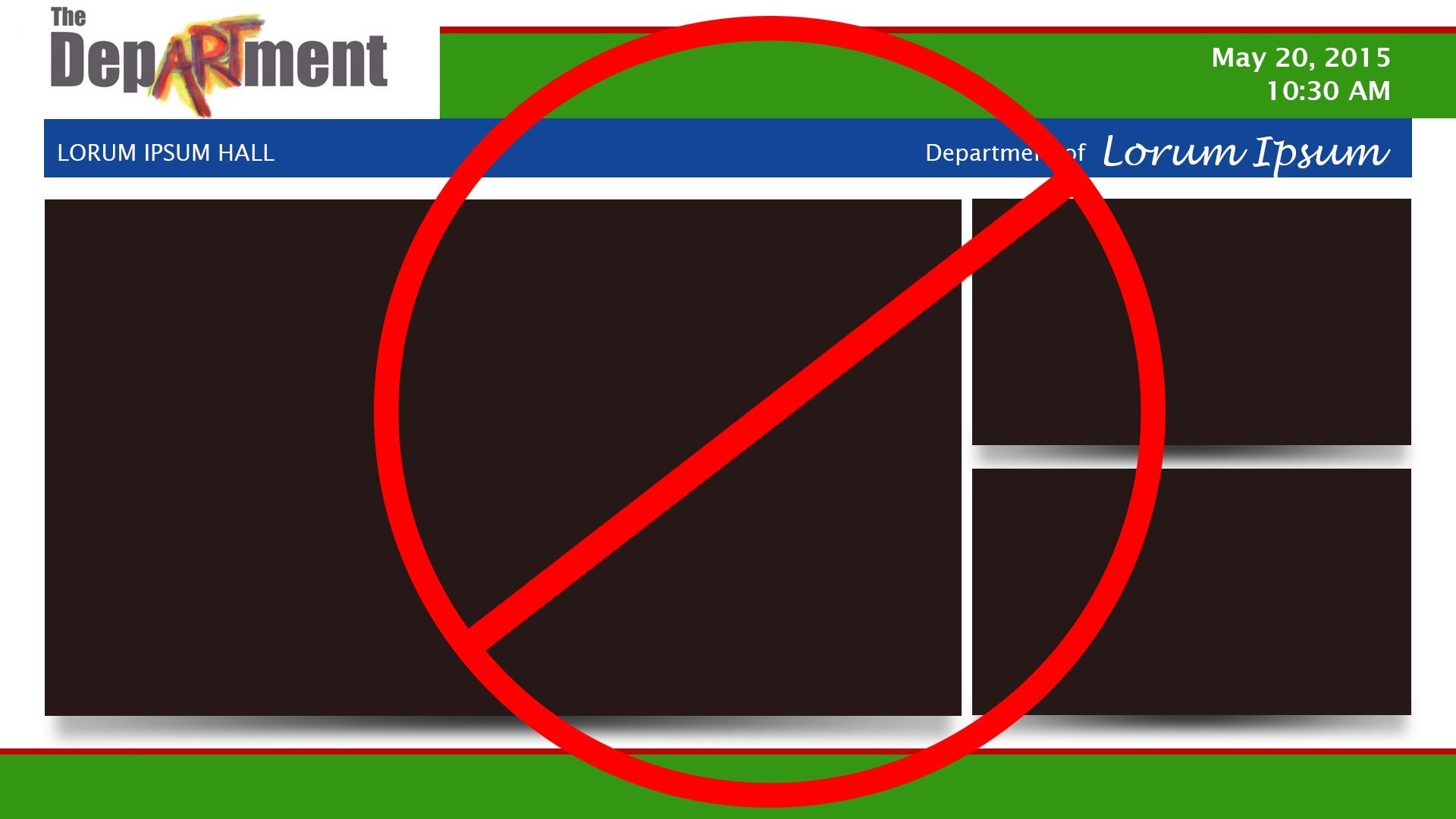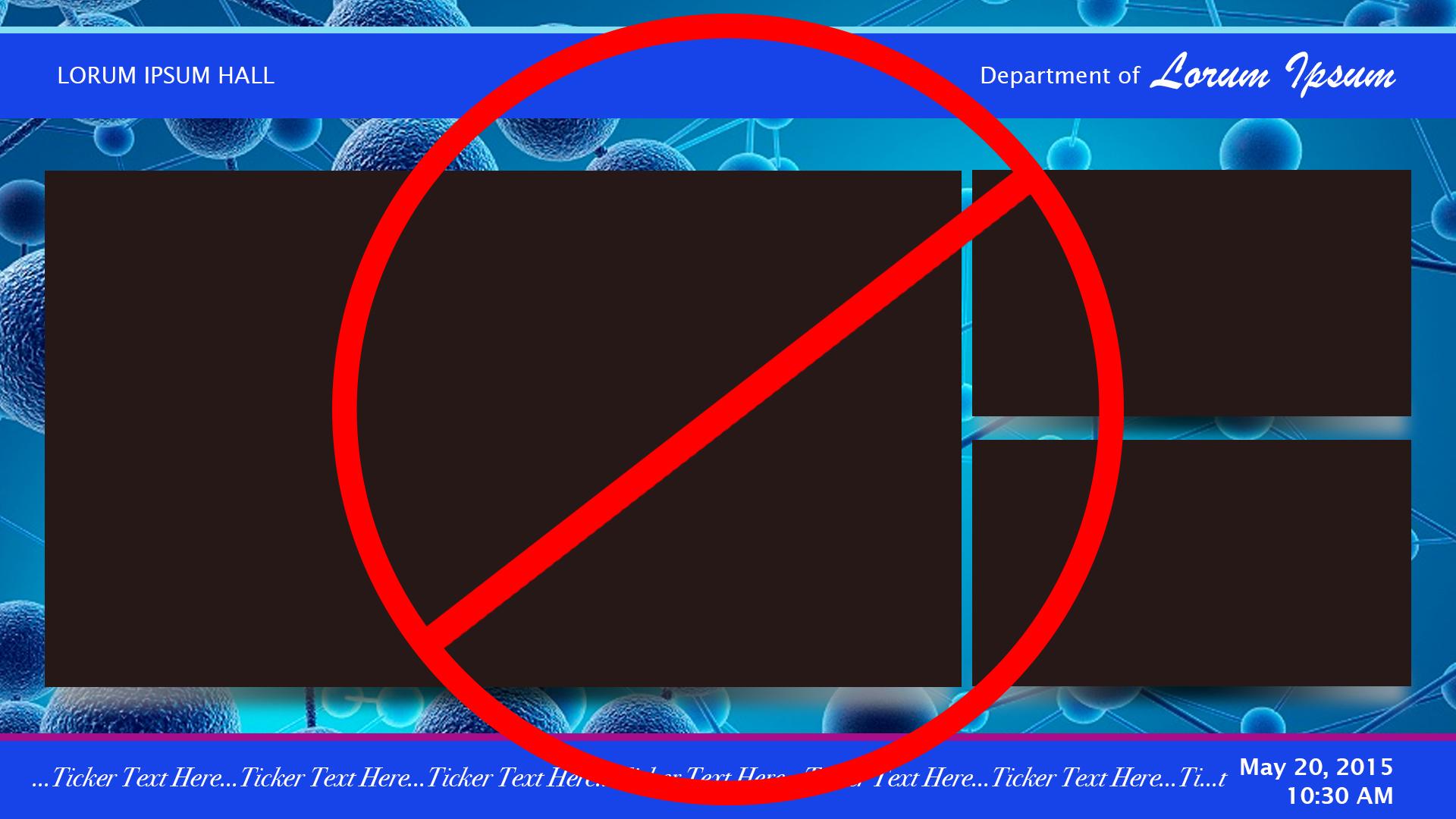The policy and protocol for use of digital signage at Brown outlines guidelines, as well as copyright and other requirements, for the use of technology resources to display information and messaging on digital signs on campus.
For the purposes of this protocol, digital signs are defined as any digital display or projection system whose content is managed by a Brown University resource and driven by an automated or unattended playback device. This protocol does not apply to large television displays in internal building spaces (conference room, classrooms, residences, etc.) that have as their primary function the broadcast of cable or satellite signals, academic course material, or projected internal presentations or as external computer monitors or projectors for presentations.
Digital signage is a visual communications medium where images, videos, and other multimedia content are shown on a digital display (LCD or LED) or projection system. Digital signs are typically placed in public locations for the purpose of informing, engaging and advertising to a targeted audience during a specified time. Digital signage systems usually comprise a content management system, playback devices, and television screens. These systems allow content to be frequently and easily updated collaboratively by many groups of users.
